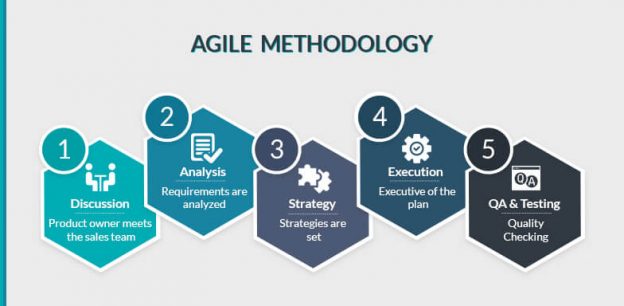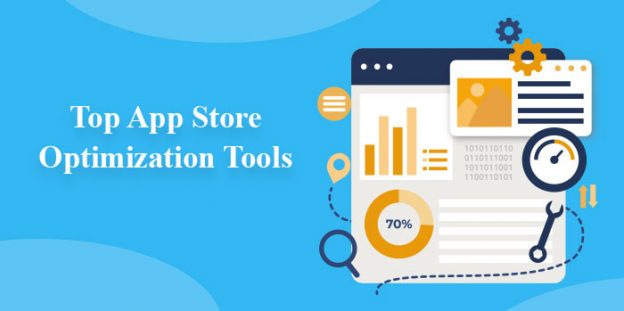What is Agile Methodology & Why is it used for Mobile App Development?

The introduction of highly functional mobile applications has slowly made the world around us tech-savvy. It has passed into almost all the industry lines by offering efficient functionalities to smoothen our lives and work. All the small and large businesses are now leveraging the benefits of various types of mobile applications such as an online retail, heart rate monitoring or construction reporting apps. There is also a huge difference we can see in the way people communicate. We now have messengers offering unlimited cost free chat, voice calling and even video calling. We can share media content on one tap with as many people as we want.
With the technological advancement and rising expectations of people, it is necessary to update mobile applications to promote new and handy features. Mobile application development is slowly becoming a complex task with the rolling in technologies and the not-so-effortless integrations required. For example, if you have heard about IoT i.e. Internet of Things, it is a market buzz which is slowing slipping into our lives promoting exciting features. Sometimes it becomes tough for even the Best Mobile App Developers to perform complex integrations to link the applications with the supported devices. Though, if an appropriate framework is used for the project development and management, things become handy and quite deliberate. Hence, this blog is going to be all about one of the best and widely used software development frameworks i.e. Agile.
What is Agile?
Agile is a Software development framework which is used globally for the development of web and mobile applications. The agile took birth to overcome the drawbacks of waterfall method which did not allow customers to have a view at the progress of development process. They could just see the final product and then could provide the feedback due to which a lot of rework had to be done. Still, it is followed at many places. Unlike Waterfall, Agile gives clients an opportunity to see the progress of the projects. The development teams come to know about required modifications at right point of time. Developers can get constant feedbacks from the clients so that the changes of rework can be reduced to a significant level.
What is Agile Software Development?
It is a set of rules facilitating continuous iteration of project development and testing to make continuous required deliveries. Agile development works on the principle of flexibility and adaptability which encourages smooth communication between project managers, developers and clients. It aspires to set up a good relationship between various project stakeholders. It is an easy to use model and simultaneously it is giving some of the greatly prepared solutions to the industry.
Following Agile method, large projects can be divided into multiple small ones and assigned to various teams as per their level of expertise. These small parts are also called as Phases by many organizations.
Agile method does not have a set rule or a proper documentation prepared. It works according to the interactions held between customers, project managers and developers.
Agile Framework for Mobile App Development
Agile methodology is used for Mobile App development as it is a complex task where customers generally come up with iterations amidst of the project cycle. The complexity might be faced by the developers due to change in hardware, software or may be Networks. For an effective planning of mobile app development, there has to be a flexible and adaptable approach. It includes regular evaluation from customer’s end and also risk management.
There are various methods included in Agile Testing Methodology, namely:
1. SCRUM
2. Dynamic Software Development Method
3. Feature driven development
4. Lean software development
5. Extreme Programming
Though, all of these methods find some space in the mobile application development arena but in this post, we are majorly going to discuss about the first one i.e. SCRUM.
What is SCRUM?
SCRUM methodology starts with SCRUM Master which sets up teams, arrange meetings and work for removing any hindrance created in the project cycle. Then, project backlogs are created by the project owner prioritizing the functionalities at each iteration. The management and organization is then done by the SCRUM team. This methodology is helpful especially when the project requirements are unclear at the initial level. It helps you monitor the progress of the project and hence you can avoid any changes of committing any fault. Also, you can learn from the past committed mistakes.
Agile Development Cycle:
1. Development concept: It includes proposing a project and setting up on the vision.
2. Inception: This is the step where the team is finalised along with funding requirements and analysing environment.
3. Iteration: Iteration is basically the modifications that are made to the software or application according to the client’s requirements or feedback.
4. Release: Any kind of modification made to the software is released after proper testing and documentation.
5. Production: This steps deals with ongoing support for the development.
6. Retirement: It marks the end of the development with migration.
If we talk about specifically SCRUM, then the lifecycle works as follows.
1. Project backlog: It consists of a major activity done by the project owner that is to create the documentation of the project as per end user’s opinion and choices. This documentation or task is then divided into small tasks for smooth and quick development.
2. Sprint backlog: Sprint backlog is basically a document made up of sprints that have been created and prioritized by SCRUM team.
3. Execution phase: Execution phase is made up of multiple cycles of iteration comprising of planning, discussion, decision and finally development and testing. The discussion meetings are conducted by SCRUM master at this level to overcome any kind of obstacle that comes in between the project lifecycle.
4. Sprint Review: It consists of Retrospective and introspective sprint analysis to plan the next sprint in a better way.
5. Increment: At this level, the first increment is demonstrated by the team and the client’s feedback over that is used for all the future sprints.
6. Final product: This is the level where all the sprints are completed by the team and the final product is released.
Agile Methodology Challenges:
Agile might seem easy to you but it is not that easy to implement the methodology. While following the Agile rules, you might be kicked off with the real life challenges.
1. Skill set required to follow Agile: You should have the best project manager and development team appointed in order to follow Agile properly else it might come out as something else. There should be a careful supervision as in Agile, one does not have a decided documentation to follow so sometimes it becomes a problem for the small firms with untrained resources.
2. Accepting the changes: When you work, you have some old values or set of rules for yourself in which you feel comfortable working while the Agile would bring continuous changes to the way you used to always work which might reduce your efficiency.
3. Handling on demand tasks: Agile methodology might bring you some uncertain tasks that you have not thought of previously while working on a particular module. So, it becomes a challenge to provide on demand changes quickly.
There are many other changes that one has to face including scalability issues, handling bugs and other technical problems.
How to overcome Agile Challenges?
1. Create product backlog and set up vision sitting with your customer: It is general scenario where the customer does not have a clear vision of how the product backlog looks like. It is highly suggested to arrange a workshop to create project backlogs and set up vision. It should be attended by the customer and the development team of the supplier. It will also set up supplier’s trust in the eyes of the customer which is very important while taking any project.
2. Inviting clients for SCRUM events: Your customers should know how SCRUM works so you can invite them to attend SCRUM events through which they will be able to understand and lesson learned during the sprints and also at the same time can also provide feedback.
3. Do not waste your time on daily meetings: Discussion is a good thing but too much of it might hamper your work. Just discuss the important topics in the daily meetings which affects the whole team. The individual problems can be later sorted out by SCRUM master by including only those who are related to that particular issue.
4. Believe your SCRUM team: Once you have made a team for a particular project, do not prefer to change members while the next project comes as those team members now have enough experience working on the Agile and they know each other’s velocity and behaviour so do not try to divide and rule. Though, you might have to change some members due to varied skill set requirements.
Advantages of Agile Methodology:
There are a lot of benefits you can receive out of using Agile technology. Some of the important ones are as below.
1. Flexibility: If you go and ask even the Best mobile application development company, they will define Agile method as the most flexible method for the development of applications. This is the method which does not bind people with any kind of strict documentation. The changes can be carried out amidst of product lifecycle so as to deliver a satisfactory product rather than something that just consoles the end users.
2. Creativity: This methodology encourages creativity, means it gives you a competitive and highly innovative solution which promotes excellence.
3. Client satisfaction: In the world of IT, client satisfaction is what keeps you running. If being a development company, you follow Agile then it is undoubtedly true that you are going to hold your clients for long. It satisfies your client with everything you deliver because you have made them a huge part of project life cycle by taking timely responses and implementing changes accordingly.
4. Cost effective: Agile is a cost effective method to follow for the web or app development as you do not have to give time to unnecessary documentation and restrict requirements. It also ensures the confidence and satisfaction of your development team where they can take responsibilities according to the assigned roles.
5. Reduce the launch time: With Agile, you do not have to wait for the project to complete to bring it in front of some of the stakeholders. Also, you can show the half complete model to investors as well to give them a clear idea of how it is going to work.
Agile Method is always great to follow as it gives your customers flexibility and allow them to provide feedback after completion of every phase. To a great extent, it reduces rework as even if you are going to do anything that is not according to your customer’s requirements, he/she will stop you there and then. Dividing the project in small modules also give them an opportunity to optimize their business. If there is some functionality which comes as a hindrance in your aim, then you can simply eliminate it at the initial phases rather than taking them to the final stage. Agile gives you improved product quality as it allows you to break it into manageable parts. Quality of the product is significantly improved through iterations, frequent builds and continuous testing. After each sprint, you can beta test the software so as to gain valuable feedback. Because each and every Sprint is done in a fixed duration, the cost is pretty much predictable and along with this, it is limited to the amount of work that has to be done by the team in the fixed time. So, Agile is best for us most of the time. What do you think? Contribute your thoughts in the comment box.
Also Read: A Detailed Guide To Publish Your Android App on Google Play Store







